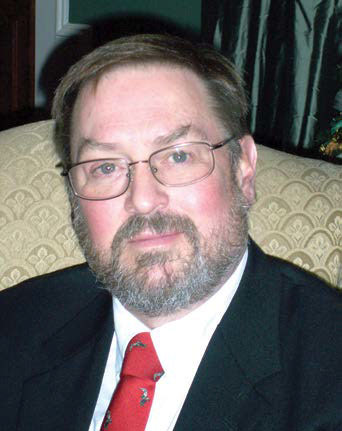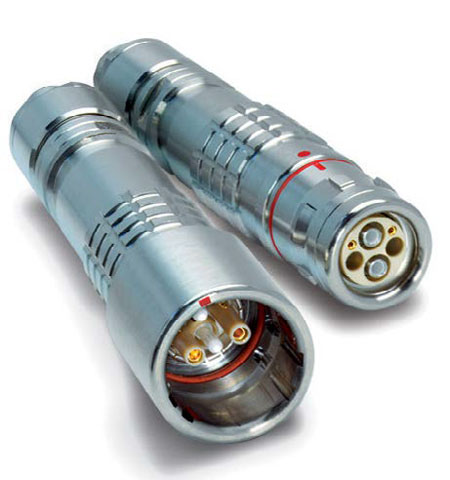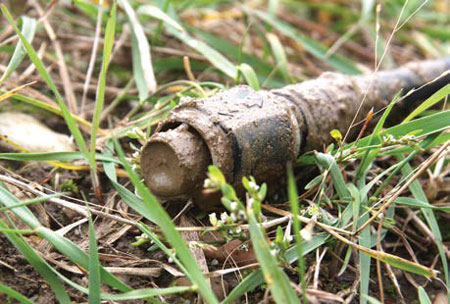4K, IP and Connecting for the Future
SEATTLE—The term future-proofing gets thrown around a lot when customers evaluate components for an installation. But when designing and specifying products that make up the skeleton of the infrastructure—cables, wire and connectors—it’s also a good idea to evaluate whether they will serve well into the future.

Steve Lampen, Belden On the subject of future-proofing, Neutrik product manager Fred Morgenstern quoted Yogi Berra: “‘It’s tough to make predictions, especially about the future.’” But Morgenstern did venture his own prediction: “In regard to broadcast signals on the acquisition and editing sides, the question appears to be not if facilities will move beyond HD signals at 3GHz, but rather when.”
He said it’s still up in the air how the industry will solve the challenges presented by these higher bandwidth transmissions. “Will the industry stick with tried-and-true SDI over coax?” Morgenstern mused. “Will we primarily migrate to Category [Ethernet] solutions? Or will fiber optics finally become the default option?
“Furthermore, as the industry migrates to IP-based workflows, allowing heterogeneous signals to be multiplexed over evermore powerful and inclusive hardware, what are the best physical carriers to transport those signals? Whatever choices facility designers make, we think that Neutrik has some compelling options.”

LEMO developed its 3K.93C connectors for SMPTE 304 standard 30 years ago, a standard that is still in use today.THE STATION OF TOMORROW
Bryan Carpenter, senior sales consultant for Bittree, said his company will introduce a new connector product at the upcoming NAB Show. “There is some momentum in the industry on trying to push UHD uncompressed video down a 12 Gbps coax line.”
According to Carpenter the new product will “be utilizing our MiniWeko-type plug. It’s re-engineered, because of all the high frequency and the precision involved in the parts. So this is where the miniBNC is gaining. It’ll be miniBNC on the back and Weko on the front end.”
Though the new product is being developed for uncompressed UHD transmission, Carpenter said customers will also find use for it in the HD world. “The advantages are that you not only run UHD across one single line, but you can also run eight 1.5 Gbps SDI lines or four HDSDI lines on that same coax cable.”
Get the TV Tech Newsletter
The professional video industry's #1 source for news, trends and product and tech information. Sign up below.
With the acquisitions Belden has made in recent years, its NAB booth has become massive. Steve Lampen, multimedia technology manager for the St. Louis-based company said the technical infrastructure to drive displays and demos is similar to the TV station of tomorrow. “We decided that the ‘Engine Room,’ [the part of the booth that houses storage and playout] which is traditionally out of sight, should be out in the middle of the floor so people could see how it’s wired up.”
He pointed out that while some have declared certain cable and wire to be “dead,” the booth will feature “equal amounts of coax, twisted pair, 10G data cables and fiber. And this is kind of the ‘station of tomorrow,’ at least at this point, some kind of amalgam of these three technologies. There’s no clear winner in any direction.”
In the future that may be less true, said Lampen. With the data world a hundred times bigger than the video broadcast world, “suddenly broadcasters are learning that this is a great way of putting stuff together because you could move the control room to the other side of the building by changing a couple of patch cords in a patch panel.” At its NAB Show booth Belden will show its new 10GXS CAT6a data cable, with a significantly smaller diameter and an absorptive layer to counter alien crosstalk, the bane of smaller diameter data cables.
OB Truck Market Demands Rugged Cables & Connectors
According to Shadath Shahid, engineering manager for Canare, preparing for the future means being able to handle higher bandwidths. “As technology’s evolving, everybody’s trying to get everything faster and quicker, and optics are one of the fastest ways to transmit signals,” he said. “We find that a lot of companies that used to use triax cable are now converting to complete fiber. That’s including some truck builders, stadiums and arenas that are using this fiber technology.”
For the rugged OB market Canare offers its SMPTE Tactical fiber. “It’s a more robust housing, with an outer jacket, and we use bend-insensitive fibers so it doesn’t break easily,” Shahid said. “It’s like a tough-shield cable, so it’s resistant to damage. It meets up with the conditions and comes out perfectly fine.”

The Fischer Connectors FiberOptic series is sealed to IP68 and can be cleaned with any water source for transmission without loss of data, making them perfect for mobile units and outdoor events regardless of the weather.Canare’s Tactical Fiber is slimmer, which allows for a lower weight per 100 feet.
One way to look at future-proofing is not just by meeting the future performance specifications of an installation, but also providing a product rugged enough to physically last into the future.
Rick Hobbs, director of business development at OCC (Optical Cable Corp.), a Roanoke, Va.-based provider of fiber-optic cable, says the company builds its products for durability. “Things are going to last, because we come from a military background,” he said.
But though OCC’s products like its B Series Mil tactical fiber cable are designed to meet military specifications, Hobbs said remote truck users of cable “are more harsh on the durability of the cable than military applications. They’re throwing things over the stands and pulling it through, and they have a short amount of time to set up in these venues, and when it’s set up they don’t want any issues to deal with.”
Connectors are a similar story. When system integrators at Mobile Studios saw a need for more robust fiber-optic cable and connectors, they formed Tactical Fiber Systems (TFS) to fill that need. “We saw more and more people going into high-definition sports production,” said Richard Rubin, president of the Deerfield Beach, Fla.-based company. Affordable connectors for fiber cable were often very fragile, so “we came up with our own connector and cable combination that was very robust for video production [and] field production.”
The weak point in many of these connectors was the exposed male fiber sticking out. “Our Magnum Connector is unique in that it’s a solid piece of machined stainless steel, and the connector itself has got female connections, so the fragile fiber tips are inside the connector,” Rubin said. This allows a stainless steel cap to protect the connector when the fiber is being pulled. Mud and water are a fact of life for OB broadcasters. “With all of our competitors, the mud will get inside all the mechanical components inside the connector, and it’s going to be a nice mess to clean,” said Jacques Miéville, product manager for Fischer Connectors. “So the broadcaster must send the whole reel back to the guy who supplied them.”
Fischer attacked this problem on two levels: “On the interface we have an IP67 ceiling, which prevents any water or debris or dirt to go into any of the mechanical parts of the connector, of the terminal, the fiber optic terminal.” With the mechanical parts isolated, a crew member “can really clean it properly in the field,” Miéville said. “And this is really interesting for broadcasters because when their connector is really dirty, they can have the first level of maintenance on the field for the connector.”
John Orona, sales and product manager for Lake Cable, pointed out the ever-increasing need for OB broadcasters to watch their weight. “Weight in the trucks is everything,” he said. “Every ounce counts on a truck.”
So Lake Cable set out to engineer a lighter ruggedized replacement for traditional 9.2mm SMPTE 311 cable that could carry the signal a similar distance. The STEALTH Special Ops cable is 7.8mm in diameter with a polyurethane jacket that’s flexible and more durable than traditional jackets while easily sliding over sticky surfaces. Lake Cable also replaced the 16-gauge steel conductor with a Kevlar strength member, “It’s stronger and lighter than steel,” Orona said. “In fact, it’s 33 percent lighter than the traditional 9.2mm cable overall.”
Craig Johnston
INVESTING IN PROTOCOL
Steven Lassen, manager of product and applications at LEMO, said that a good way of judging a company’s ability to make future- proofed equipment going forward is to look at how well they’ve future-proofed their earlier devices. Three decades ago, the Swiss-based company developed its 3K.93C connectors to meet the needs of the then new SMPTE 304 standard.
“That technology is still in use today, and we see it in support of 4K, UHD, and 8K UHD to the studio,” Lassen said. “So for futureproofing, we look pretty good with the existing connectors even today, 30 years later, and beyond.”
Lassen said that the company wanted a hybrid type of configuration, “so there are two fiber-optic contacts, what LEMO calls the ‘F2’ type, which is a 2mm, as well as two high-voltage contacts and two signal contacts.”
As to the future, Lassen said it starts with improvements in protocol. It’s up to “the industry to develop the protocol for the future, and we’re willing to work with the industry to do that,” he said. “Of course you can only get so fast over copper contacts, so eventually, at some point, for higher bandwidth type of things you’re going to have to change over to fiber. And we’re working on that.”
As the broadcast industry moves toward video over IP—where data cables replace traditional coax or fiber—Steve Cooper, vice president of engineering for Chicago-based Switchcraft, said the specifications of the cable and connectors are critical for CAT5, 5a, 6 or 6a cables to deliver future performance.
“We try to specify and obtain the best cable that we can with the least number of dB loss per foot, so that we can get the maxi-mum distance,” Cooper said. “So you have to look at your connectors, make sure your connector meets the spec, and also you need to verify the connectors when terminated with the cable you’re using still meets the spec.”
The most common RJ45 data cable connectors are built to withstand little more than air conditioner fluctuations in the single digits, with none of the environmental conditions OB truck crews are accustomed to. So Switchcraft has developed RJ45 Weathertight Connectors that are sealed to IP67 and IP68 NEMA 250 (6P) when mated.
Corning Cable Systems has traditionally been focused on fiber and cable manufacturing for the B2B market, but the company has looked into the needs and future needs of post-production houses and sees a market to address.
“Post production facilities and video production facilities use a ton of cable, especially to connect up with their storage devices,” said Sang Min (Joshua) Yoon, product line and marketing manager for the Emerging Applications team for USB and Thunderbolt Active Optical Cables for Corning. “Previously it was very hard to connect any sort of devices that actually were six or 10 feet away from the devices they wanted to connect to.”
With Corning’s Thunderbolt and USB 3 optical cables, “we were able to eliminate the inconvenience of multiple cables and connectors with one simple cable that is able to provide a ‘plug-and-play feature,’ and it works. A lot of the facilities are now running as much as 200 feet from PCs or laptops are to where the connected devices are located.”
